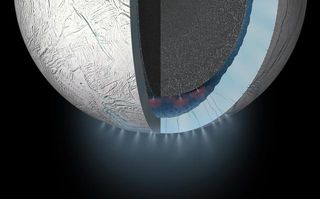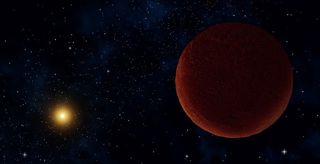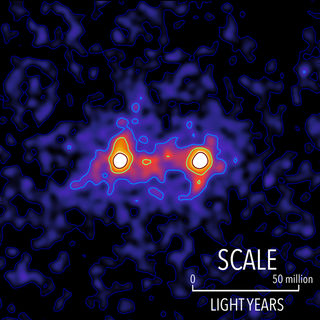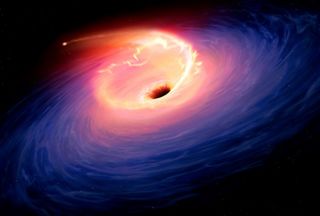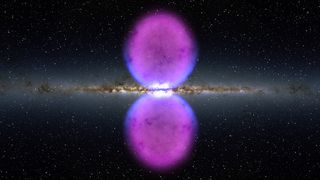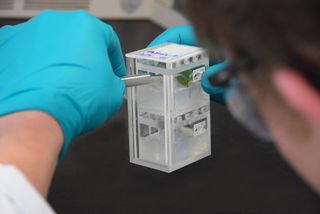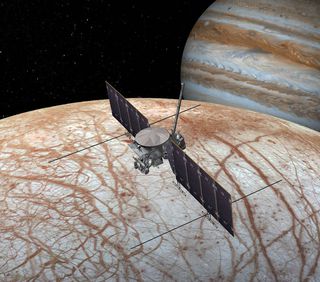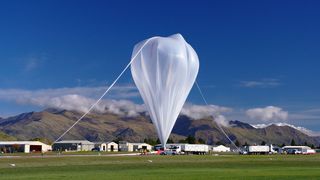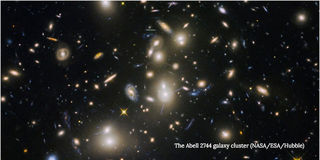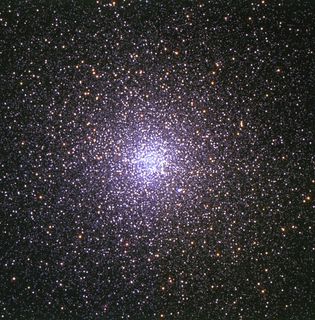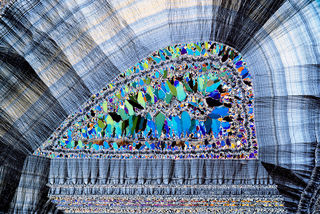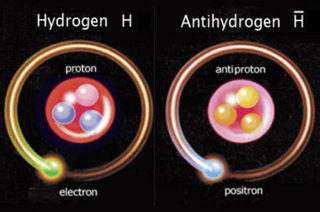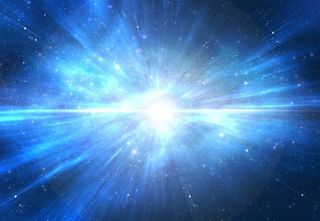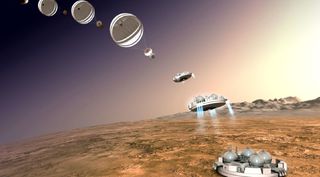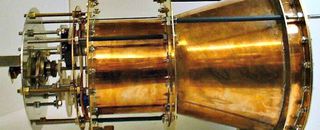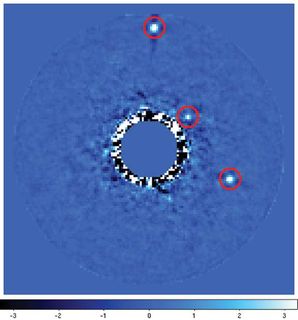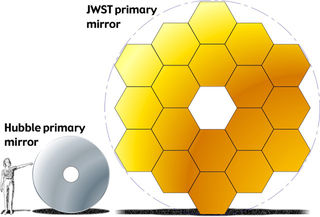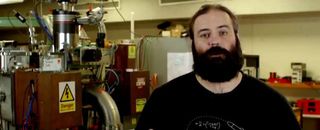Space Digest
October 2016 - What’s Hot in the Universe
Greetings fellow space fans and explorers of the wonders of this universe we all call “home”. The following column is a brief round-up of some of the more interesting, well in my view anyways, news items from the universe over the past month. My intent is not to go into too much detail as I don’t have the knowledge to do so. Rather my aim is to give a brief summary of the headlines I come across and to post links to articles so that the reader can follow up on stories of interest to them in particular.
- Digest compilation by Ian Kraack
-
Probably this month’s biggest news story is the revelation that scientists have found hydrogen in the plume of material spewing from Enceladus, one of Saturn’s moons. Data from the Cassini spacecraft indicates that the best fit explanation for this hydrogen is chemical reactions between the moon’s rocky core and warm sub-surface oceans. This discovery could very well indicate that the floor of Enceladus’s ocean includes hydrothermal vents similar to those found in the depths of Earth’s oceans.
"Hydrogen is a source of chemical energy for microbes that live in the Earth's oceans near hydrothermal vents," said SwRI's (Southwest Research Institute) Dr. Hunter Waite, principal investigator of Cassini's Ion Neutral Mass Spectrometer (INMS). "Our results indicate the same chemical energy source is present in the ocean of Enceladus. We have not found evidence of the presence of microbial life in the ocean of Enceladus, but the discovery of hydrogen gas and the evidence for ongoing hydrothermal activity offer a tantalizing suggestion that habitable conditions could exist beneath the moon's icy crust."
On Earth’s ocean floor hydrothermal vents allow unique ecosystems teeming with unusual life to proliferate. Microbes that convert mineral-laden fluid into metabolic energy make these ecosystems possible. "The amount of molecular hydrogen we detected is high enough to support microbes similar to those that live near hydrothermal vents on Earth," said SwRI's Dr. Christopher Glein, a co-author on the paper and a pioneer of extraterrestrial chemical oceanography. "If similar organisms are present in Enceladus, they could 'burn' the hydrogen to obtain energy for chemosynthesis, which could conceivably serve as a foundation for a larger ecosystem."Posted: Thursday 13 April 2017 -
Some amazing new details have been collected about trans-Neptunian Object (TNO) 2014 UZ224, otherwise known as “DeeDee” which is short for “Distant Dwarf”. DeeDee is the second farthest known TNO in the Kuiper Belt that has a known orbit. But until this study, very little other information was known about it.
Using the Atacama Large Millimetre/Sub-millimetre Array (ALMA) astronomers have managed to determine that DeeDee is about 635 km (394 miles) across and that its mass means that it should, at least in theory, be spherical. That last bit is crucial as it is one of the criteria for determining if DeeDee is a dwarf planet. DeeDee is currently 92AU from Earth (1 AU is the mean distance from Earth to the Sun or roughly 150 000 000 km), a mind-bending 1.38x1010 km (that’s 13 800 000 000 km!). The astronomers also used the ALMA data to determine that DeeDee is cold (around -243 degrees C) and not very reflective, only reflecting about 13% of the sunlight that hits it.Posted: Wednesday 12 April 2017 -
Scientists at the University of Waterloo have captured the first ever composite picture of a dark matter web that connects galaxies together. This composite image confirms that galaxies across the universe are tied together by a cosmic web of dark matter, which until now has been unobservable. "For decades, researchers have been predicting the existence of dark-matter filaments between galaxies that act like a web-like superstructure connecting galaxies together," said Mike Hudson, a professor of astronomy at the University of Waterloo. "This image moves us beyond predictions to something we can see and measure."Posted: Wednesday 12 April 2017
-
In another imaging first; by training an extensive network of telescopes stretching from Hawaii to Antarctica to Spain on the centre of the Milky Way Galaxy for five consecutive nights scientists believe they may just have managed to snap the first ever picture of a black hole. Unfortunately it will take months of data processing before they will know for sure. But if they have been successful then it may just help reveal the mysteries of how the universe was created and what it is made of.Posted: Wednesday 12 April 2017
-
A team of astronomers led by Rongmon Bordoloi of MIT used measurements of UV light taken by the Hubble Space Telescope’s Cosmic Origins Spectroscope to age the two enormous bulges of cooling gas, called the “Fermi Bubbles”, extending outward from our galactic centre more than 20 000 light years to 6 to 9 million years old.Posted: Thursday 9 March 2017
-
This seemingly innocuous question has big implications because, if proven feasible, it would mean that astronauts would be able to grow food in space quickly. So significant is it that what started out as an after-school science club project for a team of German students, has now become an important experiment on the International Space Station.Posted: Thursday 9 March 2017
-
A NASA mission to Jupiter’s third largest moon, Europa, was technically titled “Europa Multiple Flyby Mission”. But that is something of a mouthful. So instead the mission, scheduled for launch in 2022, is now officially called “Europa Clipper”.Posted: Tuesday 7 March 2017
-
America’s space agency has announced that it will be returning to Wanaka Airport in late March and early April for the third launch of its super-pressure balloon. New to the 2017 launch programme will be the construction of a 600m gravel semi-circular launch pad on the north eastern side of Wanaka airport.Posted: Wednesday 22 February 2017
-
University of Texas scientists have used a new technique that removes the light from foreground galactic clusters to peer at a generation of galaxies from the universe’s formative period. The technique combines Hubble deep field images with what is called “Wavelet Decomposition”, essentially the light-masking equivalent of noise-cancelling earphones, to computationally remove the light from foreground galaxies.Posted: Friday 10 February 2017
-
By studying the star cluster 47 Tucanae scientists have discovered a whole new class of “medium-size” black holes. Until now scientists had identified black holes with less than 100 solar masses, and others with more than 10 000 solar masses (these latter being the monsters found at many galactic cores). The new discovery by scientists from the Harvard-Smithsonian Center for Astrophysics was achieved by studying the motion of stars in aggregate, observing how they moved in relation to one another, and by measuring the scatter of neutron stars, second only to black holes as the densest known objects, across the cluster. Their results suggest a black hole with a mass of around 2 200 solar masses resides at the heart of 47 Tucanae.Posted: Wednesday 8 February 2017
-
Our planet may be blue from the inside out. Earth’s huge store of water might have originated via chemical reactions in the mantle, rather than arriving from space through collisions with ice-rich comets.
This new water may be under such pressure that it can trigger earthquakes hundreds of kilometres below Earth’s surface – tremors whose origins have so far remained unexplained.Posted: Friday 27 January 2017 -
After more than two decades of trying a team at C.E.R.N. have announced the first ever successful measurement of a spectral line for an antihydrogen atom.
The idea of antimatter was first posited in 1928 by British physicist Paul Dirac and suggests that for every particle of matter there is a corresponding particle of antimatter in a form of symmetry. The Big Bang should have created matter and antimatter in equal amounts to maintain that symmetry. But the universe as we know it is dominated by matter, with little antimatter present at all. So figuring out why this asymmetry exists would help us understand the origin and evolution of this wondrous universe we all call home.Posted: Tuesday 20 December 2016 -
Virgin Galactic’s new SpaceShip two, dubbed VSS Unity, has successfully been tested in the skies over the Mojave Desert. This is an important first step back on the road to space tourism after the company suffered a fatal crash of its first SpaceShip Two back in October of 2014.Posted: Saturday 3 December 2016
-
Scientists from the Imperial College in London and the Perimeter Institute in Canada have come up with a radical new theory that suggests that the speed of light is not constant as Einstein suggested. The assumption that the speed of light is constant, and has ever been so, underpins much of our understanding of physics. But researchers have suggested that the speed of light may have been much higher in the early universe. Now they have put forward a prediction that will allow this radical idea to be tested. "The idea that the speed of light could be variable was radical when first proposed, but with a numerical prediction, it becomes something physicists can actually test. If true, it would mean that the laws of nature were not always the same as they are today." Professor João Magueijo from Imperial College London, and one of the theory’s originators, has said.Posted: Friday 25 November 2016
-
The European Space Agency’s lander Schiaparelli crash landed on Mars after an unexplained saturation of its Inertial Measurement Unit sent bad data to the lander’s computer system forcing an early deployment of its parachute. The glitch that caused the bad data was only one second in duration. But that was enough to fool the lander’s system into thinking it had already landed, or was just about to land, when in fact it was still 3.7 km above the Martian surface. The resulting free-fall after the parachute was jettisoned was devastating to the lander.Posted: Wednesday 23 November 2016
-
What has rocked the astrophysics world is the fact that this engine doesn’t use heavy and inefficient rocket fuel. Instead it bounces microwaves around in a cone-shaped cavity to generate thrust, which is theorised to be enough to take humans to Mars in 70 days (a journey that normally takes between 150 – 300 days). The problem is it seems to defy our known laws of physics by not producing that thrust out the back of the engine like a conventional rocket.
The paper has been peer reviewed and was published in the American Institute of Aeronautics and Astronautics (AIAA)’s Journal of Propulsion and Power, December 2016 print edition.Posted: Wednesday 16 November 2016 -
Using a new instrument called the Coronagraphic High Angular Resolution Imaging Spectrograph (CHARIS for short) a team from Princeton University has been able to capture the light reflected from an exoplanet in the HR 8799 planetary system. CHARIS works in conjunction with the Subaru Telescope in Hawaii and is part of a long-time collaboration between Princeton University, the University of Tokyo, and the National Astronomical Observatory of Japan, which operates the Subaru Telescope.Posted: Friday 11 November 2016
-
More than 20 years on from the start of the project the James Webb Space Telescope is finally finished construction and is on track for launch in 2018. The James Webb will be more powerful than Hubble primarily because it will have the biggest mirror to fly in space, 7 times the light collecting area of Hubble’s Mirror, but also because James Webb will be looking in the infrared portion of the spectrum, which Hubble is not very sensitive to.Posted: Wednesday 2 November 2016
-
According to research published in the journal Physical Review C, neutron stars and cell cytoplasm have something in common: structures that resemble multi-story parking garages. This discovery comes as a result of collaboration between scientists from UC Santa Barbara and University of Indiana. Their report, published in Physical Review C, explores the relationship between two very different models of matter.Posted: Tuesday 1 November 2016
-
Post-doctoral fellow at Canterbury University Sarah Kessans was one of 120 applicants invited to NASA’s Johnson Space Centre for a week in September. This is a big deal because just 50 of those people will be short-listed for final interviews to choose between 8 and 14 candidates to go on to the 22nd Astronaut Candidate Class for August of 2017.Posted: Monday 10 October 2016
-
Recent PhD graduate Paddy Neumann has just signed a deal with Airbus Space & Defence to launch his record-breaking prototype ion drive to the ISS for testing. Mr Neumann made headlines in 2015 when his ion drive smashed NASA’s record for fuel efficiency. Now it will be taken up to the International Space Station to undergo testing in a real operational environment. What makes this exciting is that, if they can get it to work, it will revolutionise space travel. This is because an ion drive does not require the massive amounts of fuel that conventional rockets do. Instead they heat up metal to turn it into plasma, which is ejected from the rear of the drive to provide propulsion. It would also have the added benefit of cleaning up the man-made debris floating around in space as this could be the source of that “fuel”.Posted: Friday 7 October 2016

